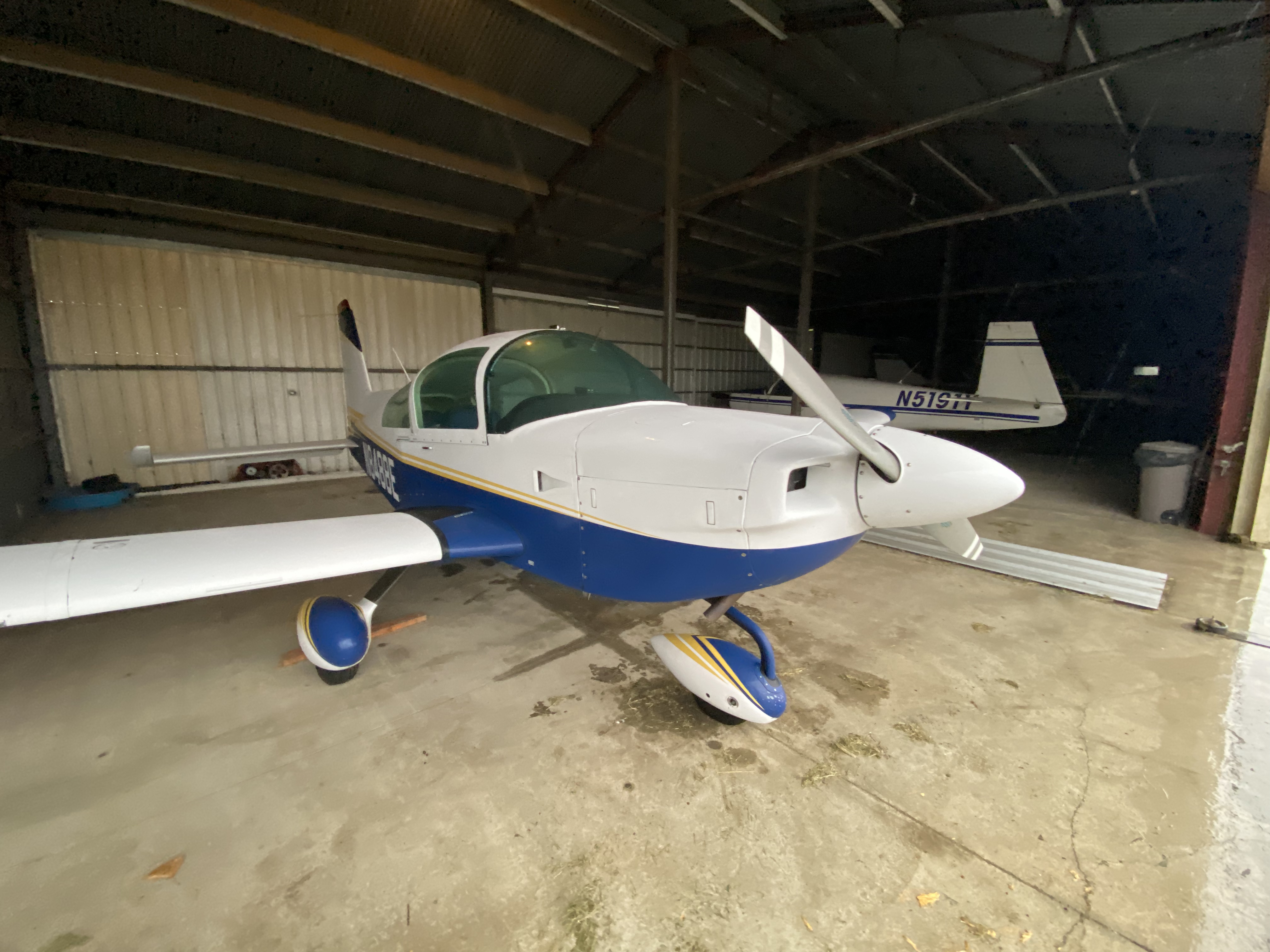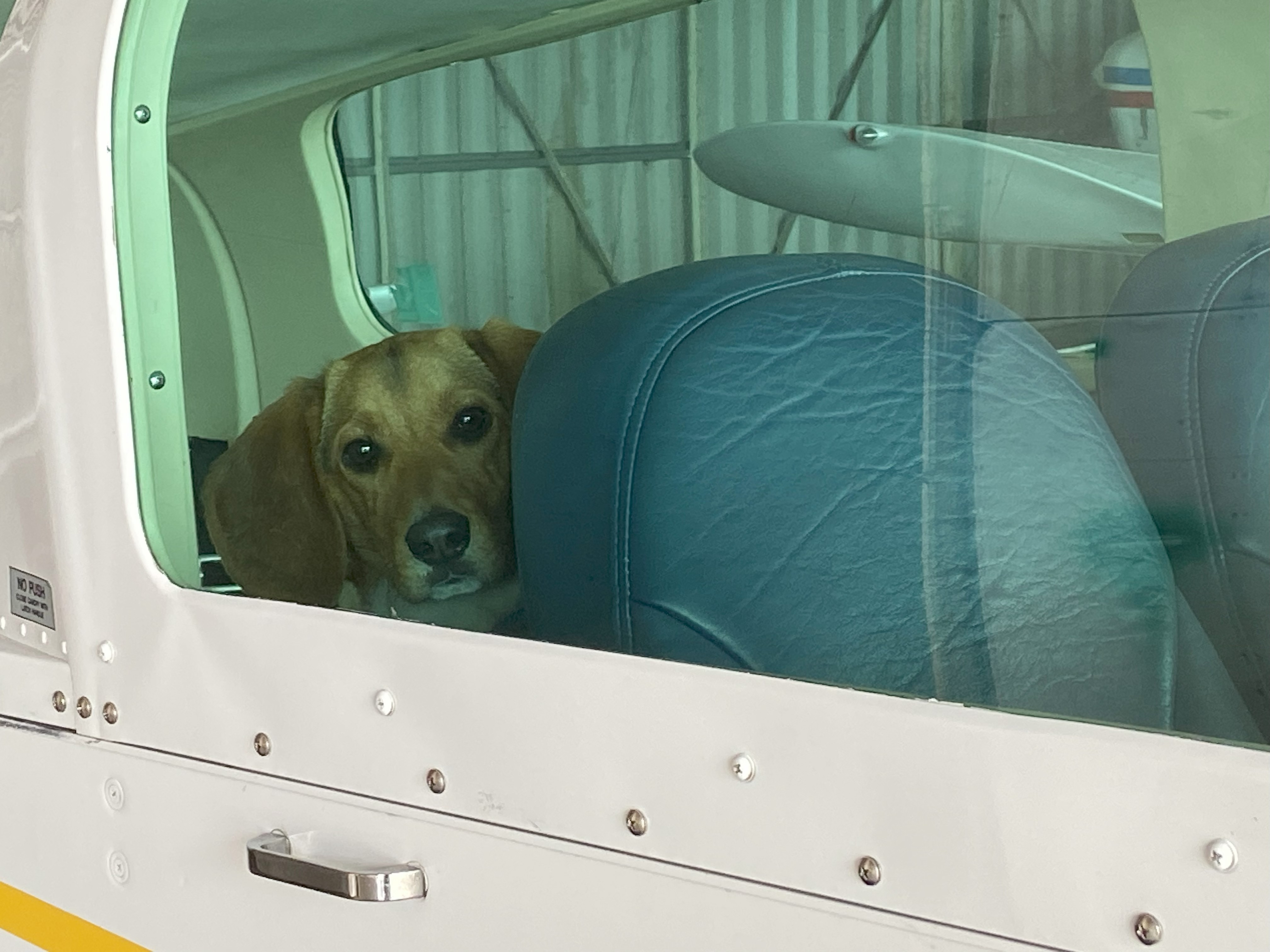Choosing a family airplane: the Grumman Tiger
Written on October 10th, 2022 by Alex Lowe
I love to fly and my goal is to fly as much as possible. I fly for the joy and the recreation of it. I fly to see new things. I fly to build mastery and for the challenge. I fly to have shared experiences with my family and friends.
That last goal meant that my top priority was safety. I have a family (my wife and two young children) and I want to ensure that they are as safe as possible. A lot of the safely factor comes down the pilot proficiency and good decision making, but that’s for another discussion.
My list of “must have” requirements included (in no particular order):
- A well maintained and cared for airframe and powerplant
- Seats for four and sufficient useful load for my family
- Low-as-possible operating costs so that the financial aspect wouldn’t cloud the joy
- IFR ready with a decent-enough GPS and autopilot to reduce workload
- Parts and maintenance availability and a community to ensure long term maintainability
- A sweet spot on the engine total time, nothing too young for the infant mortality of engines, but ideally <1,000 hrs. to have some more time
And some of the “nice to haves” included (in no particular order):
- Something pretty with a nice interior and paint job
- Something with great feel and power so it would be fun to fly solo
- Extra niceties with the avionics or glass
- Cruise speed
- Short and soft field performance and back country performance
- Low time on the airframe, want plenty of life on things that may be life limited like the spar in the Tiger, but condition mattered more to me
I also took to heart advice I had heard from my CFI and others, which after purchase I fully endorse now:
- Get a good and thorough inspection, fly the plane yourself and press every button and turn every knob
- Buy your second airplane first — think about where you’ll want to be in the next 5 years and buy that airplane
- Buy the airplane with the avionics you want — it’s tempting to buy a cheaper aircraft and upgrade, but you lose a lot of equity in the upgrade and you’ll have a lot of downtime waiting for the work to be done
Deciding on a make and model
I spent months and months researching and contemplating which aircraft to purchase, it consumed me. Obviously, I landed on the Grumman AA-5B and when the right one came on the market, I jumped on it. But here are a few of the other aircraft I considered:
- Grumman AA-5 and AA-5A, the Traveler and Cheetah – If the right one came on the market I probably would have bought it if the price was right. However, I wanted the performance of the Tiger, in the recommendation of “buy your second aircraft first.” Lots of tempting projects about upgrading the powerplant of these aircraft, but that’s so much more money all in and so much time grounded. So it wasn’t ideal.
- Grumman AA-1/A/B/C, the Yankee, Trainer, and Lynx – these are two place aircraft that are great fun to fly and much more affordable. I considered purchasing one of these to save on costs knowing that most of my flight hours would be solo or with one passenger. I could then rent a Cessna or a Cirrus for family trips. However, most of these aren’t IFR ready, and I wanted to freedom to take my family out on a day trip or to get some expensive brunch on a whim. The rental wasn’t going to allow for that. Had I gone this route I would have flown with my family probably less than half the time than I have now because every trip would need sufficient planning to get on the rental schedule. The Cessna 150 and 152 were also in this same category.
- Piper PA-31 Cherokee Six/300 – this aircraft was very high on my list and if the right one came available I probably would have purchased it. But the right Tiger came up for sale first. I really like the club seating, the useful load, the reliable dispatch, and the operating costs. The entry costs were higher than I wanted given all the desire I had for condition, avionics, and such. And it would be more of a truck vs a sports car feel.
- Cessna 172, 177, 182, 210, etc – there is a lot to like in the Cessna lineup. A lot of familiarity since I trained in a 172. Lots of support around the country. Six place options like the 210 were appealing for the family aspect. Easy to fly, good short and soft field performance. For me, a couple downsides (though not disqualifiers) were the handling, I really wanted something that was more responsive and sporty to feel more connected to the aircraft (I like sports cars and I wanted that feel); the up front costs, they are in high demand and prices reflect that; and there is just a fun factor that was missing, especially since I didn’t see myself doing back country flying.
- Beechcraft Bonanza – I considered various 35 and 36 model Bonanzas (also looked at the Sundowner) and these of course are amazing machines. Universally loved by owners and the community. The handling, speed, useful load, and heritage were very appealing. However, the up front and ongoing operating costs were more than I wanted to spend for a first aircraft. There is a Beechcraft tax and these are complex, high-performance aircraft with more cylinders.
- Vans RV-10 – Checks all the boxes except that the entry price was higher than I wanted to spend on a first aircraft. I also didn’t look at the experimental category as seriously. Three months in, and now having some of the small maintenance items to deal with, I have more knowledge and am a much bigger fan of the experimental category and wish I would have looked deeper into experimental options.
I chose the Tiger
The Grumman AA-5B Tiger turned out to be the right choice for me. It checked all the boxes I had, and ultimately what sealed the deal for me was that every review I read and all the feedback I heard was overwhelmingly positive. People love their Grumman’s and there is a small but strong community around the make. That gave me a lot of confidence in the choice. After watching the online ads and forums for months and months, the right Tiger came on the market and I jumped on it. It was maintained by a Grumman specialty shop and had a single owner for decades. It was well loved and checked all my boxes and then some so I paid a premium for it. The extra cost amortized of the next 5-10 years is small relative to the benefit.
Learnings
After three months of ownership there are a few things I wish I would have considered more. I think I lucked into the right airplane in some ways and I have no regrets, but there are a few things I wish I would have thought through more:
- Soft field and short field — there are so many cool places to go to get into nature, to go camping, etc. The Tiger short and soft field isn’t terrible and people do it. But it’s definitely not the best performer in the lineup. There are several airports on my “places to visit” list that I may not be able to get into.
- Engine monitor — after I purchased the aircraft I learned a lot more about maintenance, and specifically Mike Busch and condition based maintenance. One of his “must have” suggestions is an engine monitor with the ability to download the data. I’m happy with the 4-cylinder EGT and CHT and the fuel totalizer for the time being. But an advanced engine monitor is on my list to upgrade.
- Engine heater and cold weather ops — mine has one but I got lucky and didn’t think about it before I found this aircraft. My home field is in Wisconsin and it gets cold. I flew in the winter as often as I could, with sub-zero temperatures and thank goodness I have the engine heater which I have hooked up to a remote cellular switch so I can start the pre-heat the night before. Cold weather ops was just not something I had considered, so I got lucky that the bird I bought was based in Illinois and was setup.
- Cabin configuration — I didn’t think about configuring the rear seats for different missions – hauling, camping, dogs. The Grumman turned out to be awesome because the rear seats fold down really easily. I take my beagle on flights with me and he can lay in his bend where I can see and pet him. I haven’t done it yet, but people bring bikes in the back and will even sleep in the cargo area. It’s like a minivan! And with the sliding canopy it’s really easy to get cargo and kids in and out.
- Experimental — after having some small maintenance items, I realized how limiting the allowed owner maintenance for certified airplanes is. I have an engineering background and have much more capability than the FAA allows me to work on. So this will be a big consideration for my next airplane.
- Test more — I received the advice to operate everything in the aircraft, and the Grumman knowledgeable CFI I met with for the demo flight said the same thing. I turned on everything and asked questions. However, there are some things I wish I would have dug into more — for example I tested some basic functionality of the autopilot but it turned out there were some other issues. There were also some other small things that I found after purchase that I should have caught with a more thorough test.
- I am really happy with the Tiger. The joy and the value I get from it has been worth the costs for me. I think one of the biggest values though is just owning the aircraft instead of renting it. There is a level of freedom and of comfort in aircraft ownership that I think any aircraft would have provided. If I take a long lunch I can go fly. If I’m free after work I can go fly. If we have a free Saturday we can go fly. It’s allowed me and my family to fly much more frequently and on a whim. I get more joy and build and maintain more proficiency.
- In addition, everything is where I left it. My headset is waiting for me. My flashlight, hand radio, charging cable, spare batteries, sunglasses are right where I left them. I worry less about other people abusing or damaging something that may affect me. I know things are being maintained and repaired when they need to be. So I can arrive at the airport and get to the runway much faster and with more confidence than with the rental.
